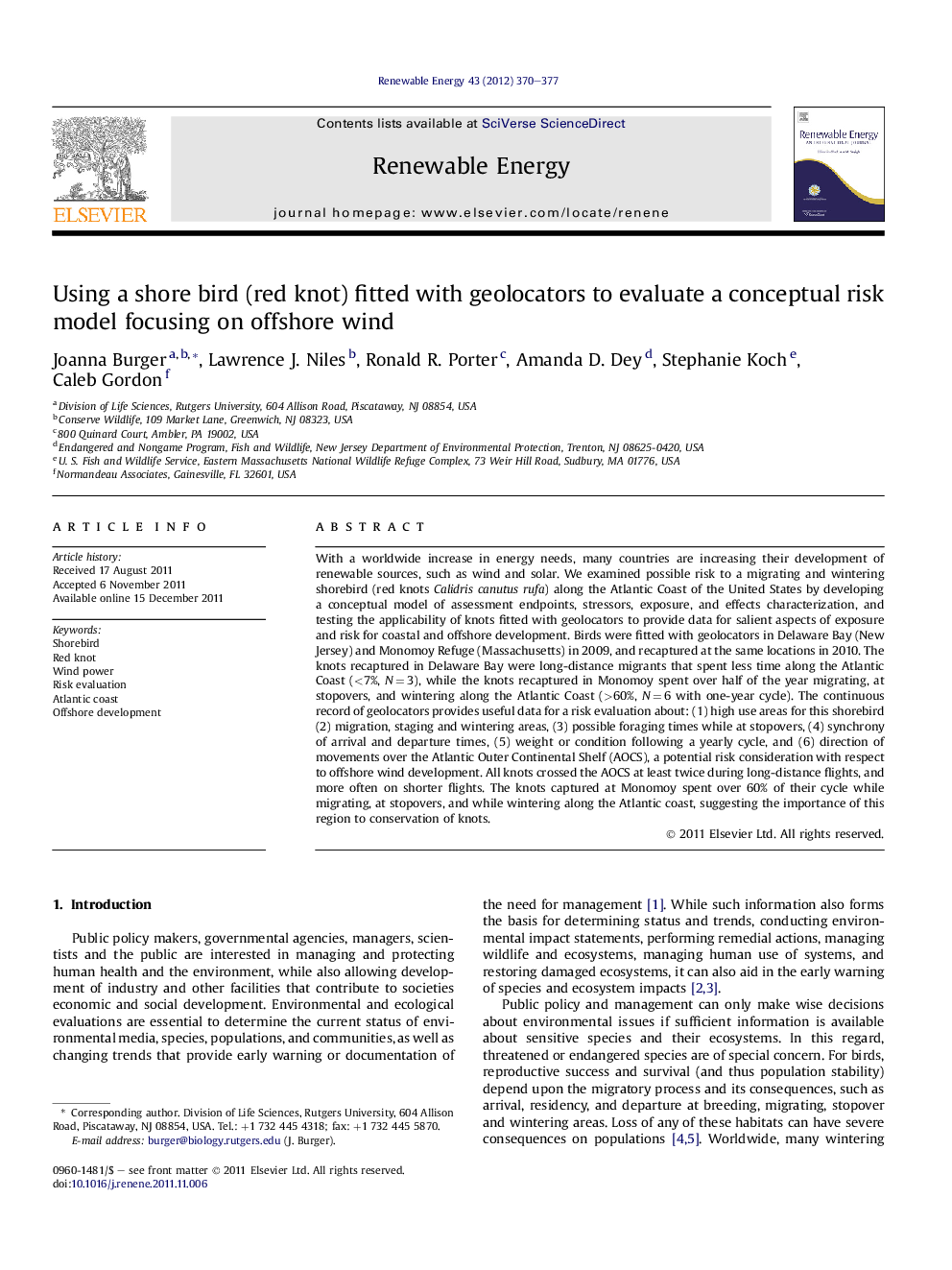| کد مقاله | کد نشریه | سال انتشار | مقاله انگلیسی | نسخه تمام متن |
|---|---|---|---|---|
| 301081 | 512496 | 2012 | 8 صفحه PDF | دانلود رایگان |

With a worldwide increase in energy needs, many countries are increasing their development of renewable sources, such as wind and solar. We examined possible risk to a migrating and wintering shorebird (red knots Calidris canutus rufa) along the Atlantic Coast of the United States by developing a conceptual model of assessment endpoints, stressors, exposure, and effects characterization, and testing the applicability of knots fitted with geolocators to provide data for salient aspects of exposure and risk for coastal and offshore development. Birds were fitted with geolocators in Delaware Bay (New Jersey) and Monomoy Refuge (Massachusetts) in 2009, and recaptured at the same locations in 2010. The knots recaptured in Delaware Bay were long-distance migrants that spent less time along the Atlantic Coast (<7%, N = 3), while the knots recaptured in Monomoy spent over half of the year migrating, at stopovers, and wintering along the Atlantic Coast (>60%, N = 6 with one-year cycle). The continuous record of geolocators provides useful data for a risk evaluation about: (1) high use areas for this shorebird (2) migration, staging and wintering areas, (3) possible foraging times while at stopovers, (4) synchrony of arrival and departure times, (5) weight or condition following a yearly cycle, and (6) direction of movements over the Atlantic Outer Continental Shelf (AOCS), a potential risk consideration with respect to offshore wind development. All knots crossed the AOCS at least twice during long-distance flights, and more often on shorter flights. The knots captured at Monomoy spent over 60% of their cycle while migrating, at stopovers, and while wintering along the Atlantic coast, suggesting the importance of this region to conservation of knots.
► Four of 8 red knots with geolocators from Massachusetts wintered along the Atlantic Coast.
► Red Knots with complete cycles spent over 60% of the year along the US Atlantic coast.
► All Red Knots crossed the Outer Continental Shelf Area at least 2–6 times.
► Crossing the AOCS could put them at risk from wind turbines if they fly at blade heights
Journal: Renewable Energy - Volume 43, July 2012, Pages 370–377